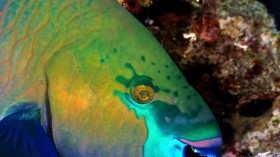Contaminated water is a global issue that the world has been trying to address for years. Freshwater is extremely valuable to human survival, but through the years, lakes and rivers that support life have been threatened and damaged by improper waste disposal.
According to United Nations agencies, one-third of the world's population live in countries that are experiencing moderate to high water stress. The Philippines is just one of those.
In Metro Manila, the Pasig River is the main body of water, which runs through five cities and connects the Manila Bay and the Laguna de Bay, making it important to the ecological and economic structure of the country.
A case study published on behalf of the United Nations Environment Programme, the Water Supply & Sanitation Collaborative Council and the World Health Organization revealed that overcrowding near the river results to incessant discarding of wastes, making the river bed full of nonbiodegradable and toxic wastes. This results in grave flooding along the river, distressing and polluting nearby homes.
To advocate for a cleaner and greener environment, some artists from the Philippines got down and literally dirty to paint using pigments from Pasig River and other contaminated rivers in the Metro under a project commissioned by an TBWA/Santiago Mangada Puno, an ad agency.
Artists in the #Philippines are painting with polluted #water for an important reason. https://t.co/WVkjEPB0Gs pic.twitter.com/E4NIRmBzsg
— Ocean Champions (@OceanChampions) June 12, 2016
"At first it was difficult because it was the first time I experienced using dirty pigments. And second the smell. Although the pigments have been decontaminated, the smell of the sludge was still present, said JC Vargas, a visual artist who participated in the exhibit in a video interview with Now This.
According to Reuters, the project included a total of nine artists who used pigments from six contaminated rivers and tributaries in Manila to put up a three-day exhibit titled "Dirty Watercolor."
The pigments were decontaminated and oven dried for 24 hours, before mixed with a gum arabic solution to become watercolor. This was used to create more than 20 paintings that were finished within the month, BBC reported.
The paintings were sold for around 40,000 to 120,000 Philippine pesos. The proceeds will be used to rehabilitate the dead rivers in the Metro.
© 2024 NatureWorldNews.com All rights reserved. Do not reproduce without permission.





